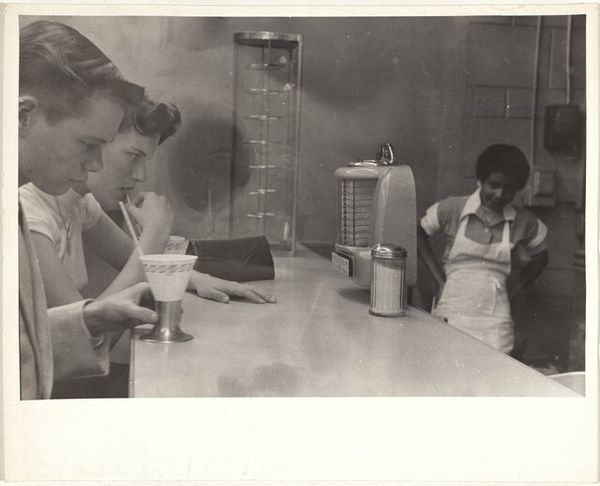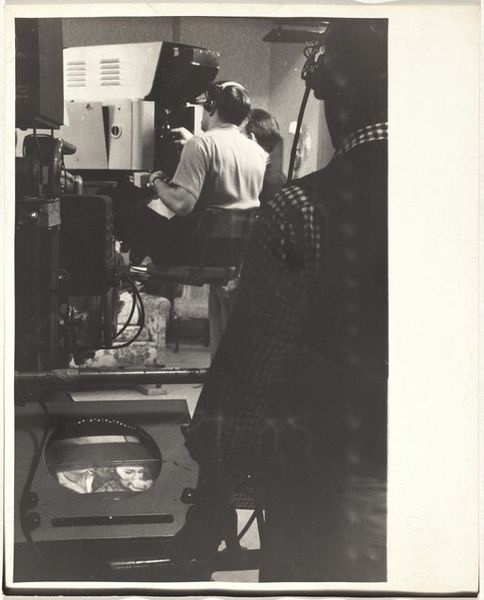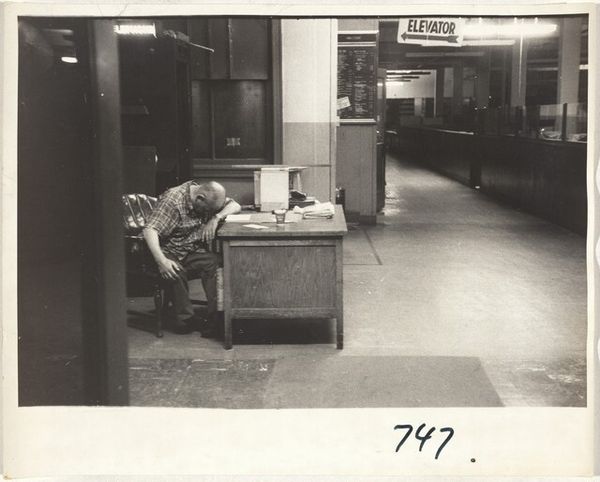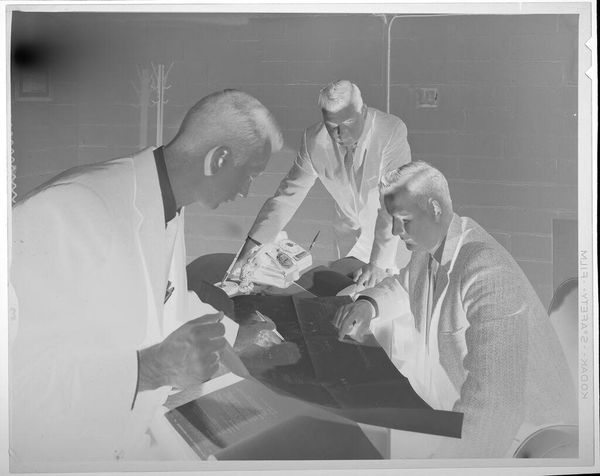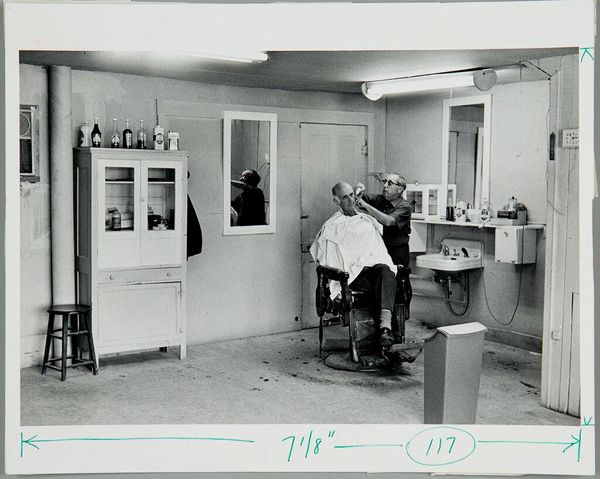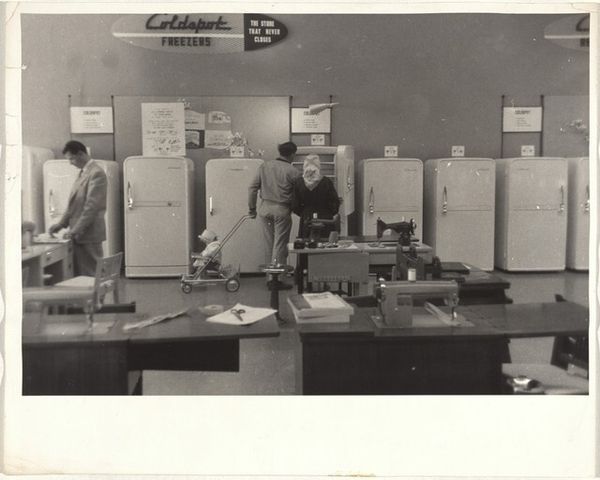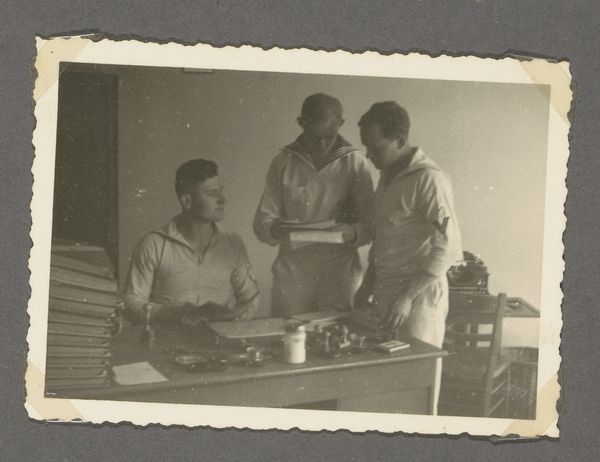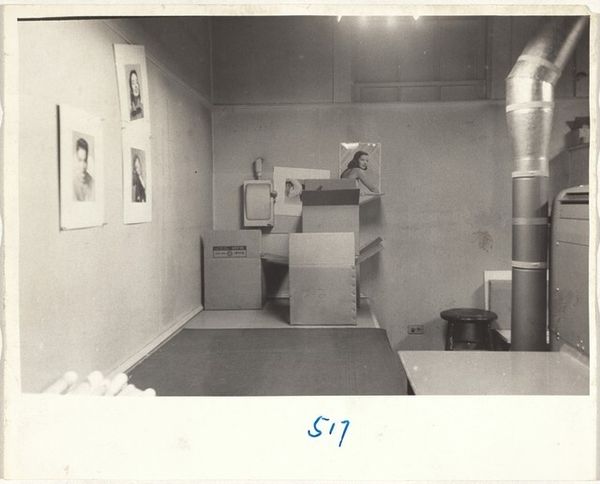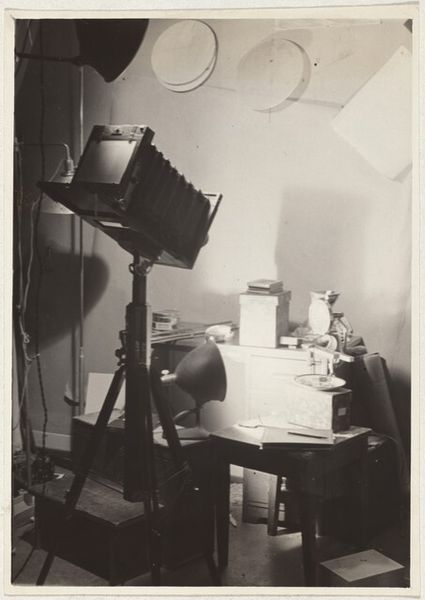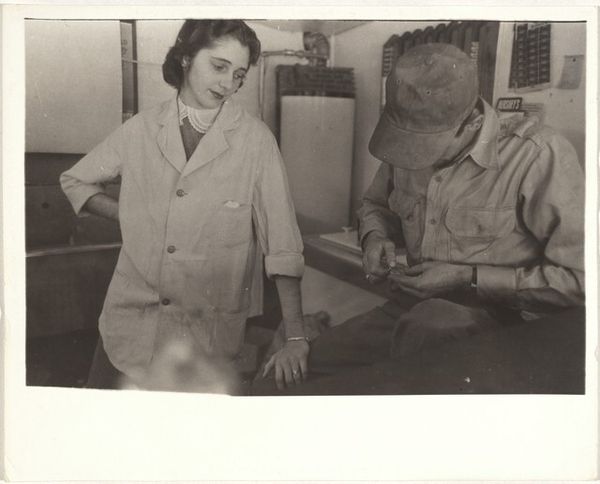
print, photography, gelatin-silver-print
#
print photography
# print
#
photography
#
gelatin-silver-print
#
cityscape
#
genre-painting
#
modernism
#
realism
Dimensions: sheet: 20.2 x 25.2 cm (7 15/16 x 9 15/16 in.)
Copyright: National Gallery of Art: CC0 1.0
Curator: What a fascinating slice of mid-century America we have here, "Meeting, NBC TV studio--Burbank, California," by Robert Frank, taken in 1956. It’s a gelatin silver print. Editor: It’s almost claustrophobic. The framing and the close quarters—you can practically smell the stale coffee and paperwork in that office. Curator: Yes, Frank was known for capturing the underbelly of American society, challenging the idealized image often portrayed. Look at how the setting, the NBC studio, a space of illusion and broadcast, becomes so utterly mundane. Editor: Exactly. The briefcase gaping open on the desk is so telling; crammed full, bulging. What were they producing there? It all feels so incredibly tangible, made by real hands in this almost airless, stark space. Curator: It reflects post-war America's complex relationship with the media. NBC was, and still is, a major cultural force. To see behind the curtain, to witness this ordinary scene… Editor: And consider the print itself, the gelatin silver process. A relatively accessible medium that allowed Frank to create numerous copies, and disseminate his message broadly challenging conventional aesthetics and artistic production. It’s far from a singular object. Curator: This accessibility, that very dissemination, was Frank's intent. He critiqued not only the image, but the means of image production. The snapshot aesthetic he employed also clashed with the carefully constructed imagery of corporate giants like NBC. Editor: He captures the kind of granular reality television couldn't yet create. It shows, through this grainy material and slightly skewed composition, an intimacy mass media seemed desperate to obscure. Curator: Absolutely. Frank uses the medium to peel back layers. By showing the everyday labor of creating media, he forces us to think about what’s hidden, the often-unseen hands shaping what we consume. Editor: Looking at this reminds us that even in the machine of broadcast, people – with their papers, briefcases, and phones – make the sausage, with its own material consequences. Curator: And understanding that, as you point out, grounds us and complicates any romantic notion of a pristine or unbiased media landscape. Editor: Yes, it pushes past mere symbolism to something about material reality, showing all that media depends on and what that demands of people. Curator: Indeed. This work urges us to recognize that production isn't some clean process in a glossy studio; there are bodies, tools, and the labor-intensive activities that shape the pictures presented.
Comments
No comments
Be the first to comment and join the conversation on the ultimate creative platform.
